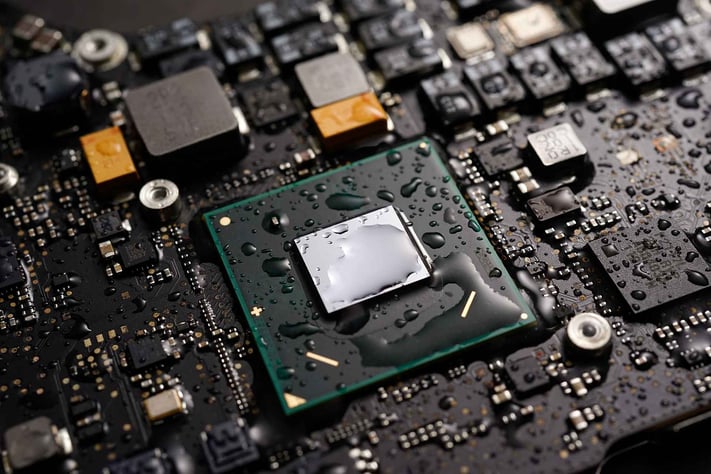
Water exposure can completely disrupt a fully functioning electrical flow, proving detrimental to electronic devices. Commonly causing short circuits, the presence of water not only proves to be a nuisance, but a hazard that typically results in permanent component damage.
Unfortunately, this threat to electronic device functionality is ever-present. From being dropped into large bodies of water to simply being used in significantly humid environments, electronic devices are constantly being exposed to harmful amounts of moisture.
With that being said, quality waterproofing is a must for most electronic devices, which is why it is crucial that device manufacturers partner with a supplier that avoids the common mistakes associated with waterproofing electronic devices.
Mistake #1: Relying on 2 flat surfaces and a gasket
Putting two surfaces together with a sealing gasket between them would seem to make sense. The problem is capillary action where the water spreads through the pressed surfaces until it finds a slightly larger gap where it leaks inside the enclosure.
The solution is to have overlapping surfaces with the compressible material to create the “tortuous path” so that water would have to move up, over, down, and around before getting inside.
Mistake #2: Fastener placements and tightness
Using fasteners is the way to close the part and it can be tempting to overtighten them to correct for a non-flatness issue, but that may increase the gap elsewhere. Instead, place the fasteners in ways that pull the parts together evenly.
Mistake #3: Not realizing the part needs to be waterproof or resistant
True story. We’ve had several customers that designed their part, launched them, and then received complaints that the device was shorting out. During their design phase, the engineers thought that the device was wiped clean. Turns out users held them under a faucet to save time. No easy fix for this one, as it is generally an expensive do-over. The lesson: make sure you know what is needed.
Mistake #4: Forgetting other ingress points
Even if you do a great job on preventing leaks in the case halves, you may wonder how water is still getting inside. Some commonly missed entrances are through LED or light pipes that protrude the surface, battery doors, battery contacts, and buttons. There are design principles that can help overcome many of these overlooked pathways.
AIM Understands the Waterproofing Process of Electronic Devices
AIM takes great pride in our reputation for excellence, which is why we are thorough in our waterproofing methods for electronic devices. By understanding the common pitfalls of waterproofing, our team is able to successfully avoid them and produce high-quality products. We invite our readers to experience this level of quality for themselves by contacting AIM the next time they require waterproofing for electronic devices.

 SINCE 1993 MADE IN USA
SINCE 1993 MADE IN USA 

